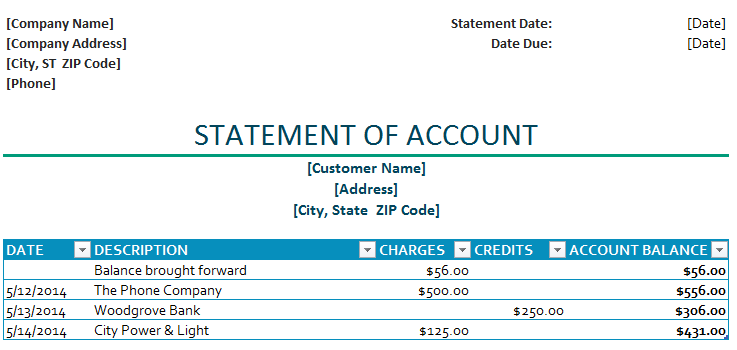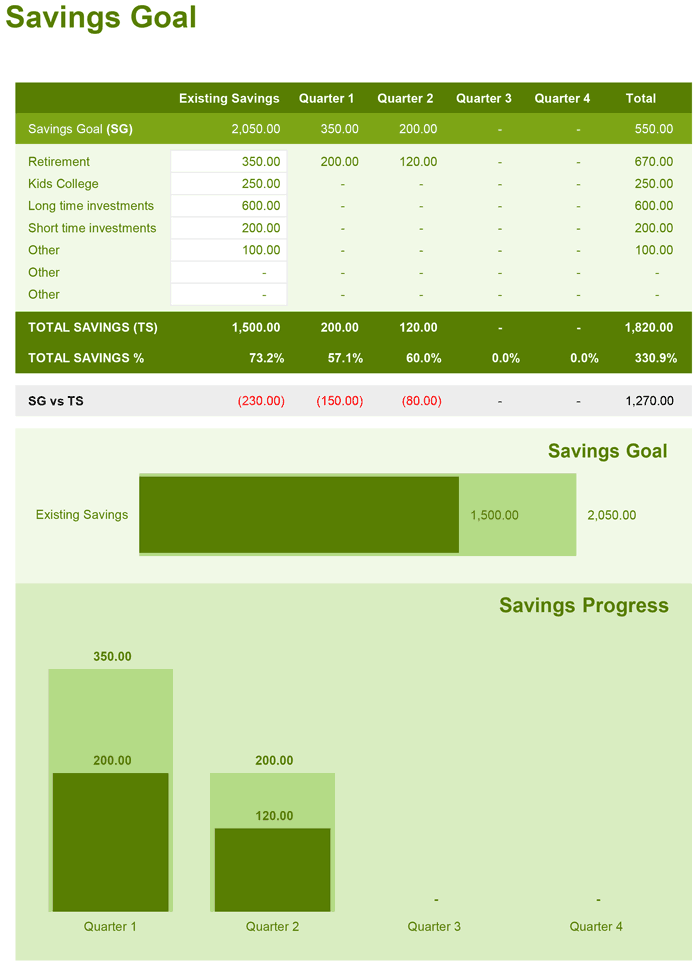
Thus, she projects to earn a 10% annual return during the first two years of the investment period, and 8%, 6%, and 4% returns over each of the next two- year periods, respectively. As an investment strategy, the client would like to adjust the asset allocation of her investments over time, evolving from a more aggressive strategy during the earlier years into a more conservative investment approach as she approaches retirement age. Your client has $500,000 in savings with eight years left before retirement.
Savings planner excel how to#
This example shows how to use the FVSCHEDULE function in Excel to calculate the future value of a present single sum allowing for a changing annual rate of return over the savings period. Note that sometimes the variables in time value functions are entered as negative numbers, such as the negative $500,000 in this scenario because it represents an investment, equivalent to an outflow of cash.Ĭalculating the future value of a present single sum with multiple interest rates Using the FV function as illustrated in cell B12 of the screenshot "Using the FV and FVSCHEDULE Functions," the formula =FV(0.06,8,0,- 500000 ) is used to calculate that the client's IRA would grow to $796,924 by the end of eight years, assuming a 6% return per year. Your client has $500,000 in an IRA and has asked you to estimate its value when the client reaches retirement age in eight years, assuming a 6% return each year. EXAMPLES USING FV AND FVSCHEDULEĬalculating the future value of a present single sum These functions also can be used to determine the expected future value of a cash investment, IRA, or 401(k) account.

TIME VALUE FUNCTIONS (FV AND FVSCHEDULE)Įxcel's FV and FVSCHEDULE functions can be used to calculate the future value of money, whether the application involves a lump sum (i.e., one payment or deposit) or an annuity (i.e., several equal payments or deposits made in equal intervals). Examples include calculating the present value of long- term receivables, performing a goodwill impairment evaluation, determining the proper sale price of a bond, and estimating the internal rate of return on capital budgeting decisions. CPAs can then apply the demonstrated functions and techniques in other scenarios. The Excel tools discussed herein include the FV, FVSCHEDULE, PV, NPV, PMT, RATE, and NPER functions.įor the sake of simplicity, this article focuses on examples related to personal financial planning. This article provides example scenarios and explains various approaches for calculating the time value of money using Microsoft Excel.

Whether providing financial planning advice related to a client's retirement, advising a client about a business investment opportunity, or calculating the present value of future lease payments, among other tasks, accounting professionals need to understand how to efficiently and accurately perform the appropriate calculations for a time- value- of- money analysis.

Too many financial decisions are made without factoring in the time value of money.


 0 kommentar(er)
0 kommentar(er)
